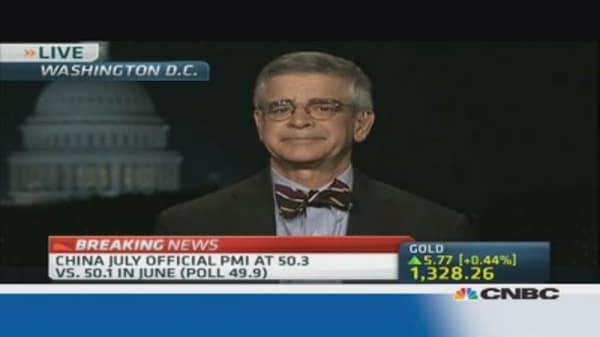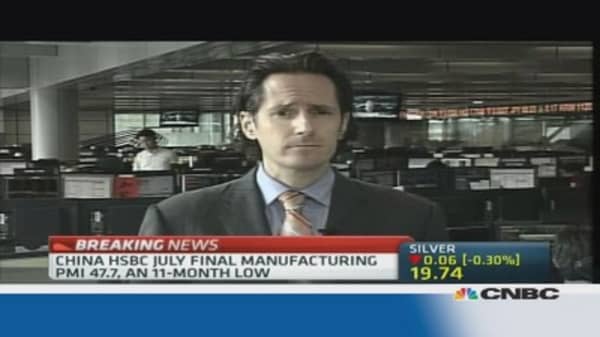China's manufacturing sector managed to stay in expansionary phase in July, according to official government data on Thursday, defying forecasts of a contraction.
Official manufacturing Purchasing Managers' Index (PMI) rose to 50.3 in the month from 50.1 in June, and better than a Reuters consensus estimate of 49.9. The key 50 threshold demarcates expansion from contraction.
The data drew swift reaction from markets. The Australian dollar, whose recent weakness has been attributed to the slowing growth in China, rose a quarter of a percent to trade at $0.8964.
China's Shanghai Composite rose 1.4 percent to a one-week high, while Hong Kong's Hang Seng rose 1 percent to a two-month high.
U.S. stock futures also climbed with the Dow Jones Industrial Average and S&P 500 both called higher by half a percent each.
(Read more: China growth plans pretty persuasive: O'Neill)






